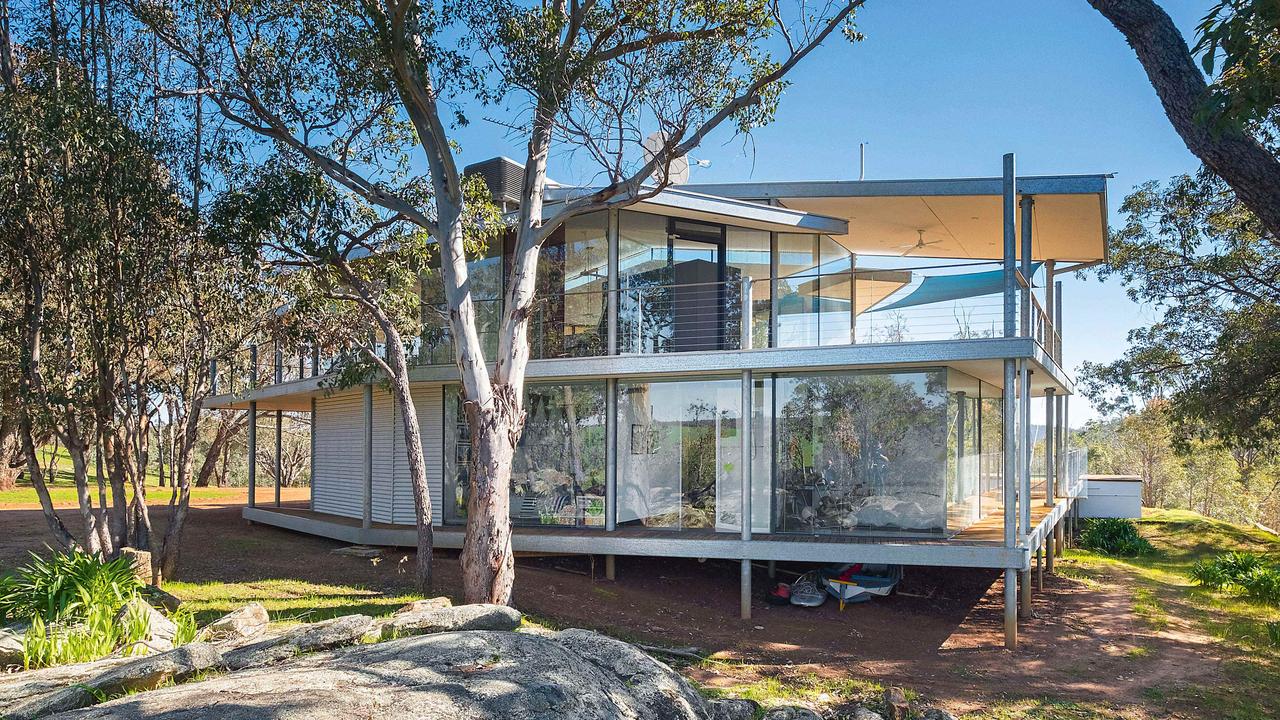Anthony Lister: street art, the law and his personal mission
Renowned street artist Anthony Lister was paid to beautify public spaces – then he was arrested for it.
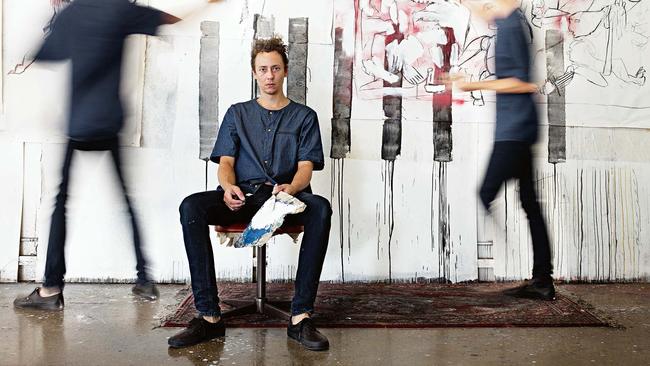
One of Australia’s great modern artists traipses up and down the inner-city streets of his home town wearing a high-visibility yellow vest atop a white polo shirt and shorts.
His tool today is not charcoal, paintbrush or aerosol can but an extendable claw that he uses to pick up rubbish from the footpaths and gutters of Spring Hill, Brisbane. On this gloomy Saturday morning in mid-February, Anthony Lister is performing community service because two weeks earlier a magistrate found him guilty of wilful damage by graffiti in a case brought by Brisbane City Council – which first encouraged Lister to paint its traffic signal boxes in 1999.
The irony of this situation is not lost on a man who rejects the label “artist” in favour of “adventure painter”. Lister donated his time for that council initiative, painting 120 boxes in total. In the years that followed he was paid to paint more of them by the Department of Main Roads, earning him enough to set out on the path to international renown. Yet in an abrupt about-face several years ago, BCC endeavoured to make an example of the artist whose work they once encouraged. This morning, a man whose artistic ethos is to beautify degraded public spaces with paint is now tasked with beautifying them by picking up rubbish.
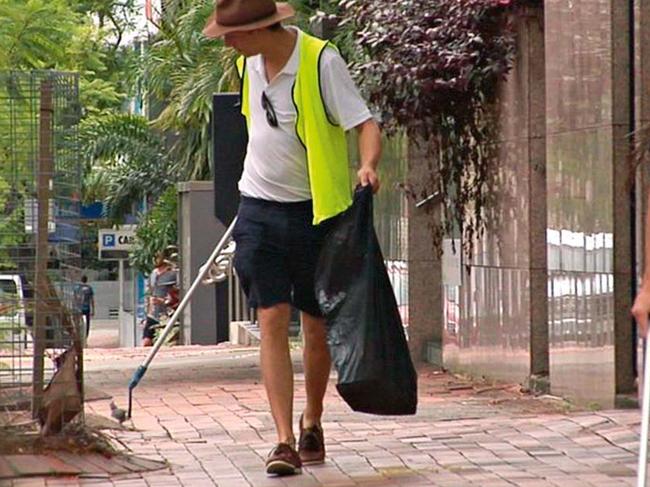
A middle-aged Queensland Government worker meets the crew, comprising Lister and three fellow community servants, at a Corrective Services building on Little Edward Street at 9am and chaperones them on a winding route through the neighbourhood. Had the government worker typed Lister’s name into Google, he would have found recent news articles which note that Lister’s bold, provocative works hang in the homes of Hugh Jackman, Geoffrey Rush and the musician Pink. He would have seen that Lister’s individual paintings can sell for up to $20,000, that Art Collector magazine has listed him as one of Australia’s most collectable artists, that Complex named him among the most influential street artists of all time and that luxury brand Hermès gave over its window in Collins Street, Melbourne, to a Lister installation last year.
As the community servants pass the Australian Federal Police headquarters and St Andrew’s War Memorial hospital, their black plastic bags grow heavier with each squashed aluminium can and discarded plastic bottle they snatch with their extendable claws. Lister, a boyish 36-year-old and father of three, smiles often and presents an air of playful charisma that infects those around him. He speaks quickly, at a near-manic pace. He is an idealist and an optimist who, in recent years, has taken it upon himself to act as a mouthpiece for street artists.
Past Brisbane Grammar School and the bustling Roma Street railyards they walk, noting the dearth of tagged graffiti that once coloured the walls neighbouring the carriages and train lines; they are now painted a uniform grey. The group tramps past six signal boxes that Lister painted around the turn of the century. They have since been refreshed with other artists’ work, but he remembers them well. There are around 1000 of these throughout Brisbane, and after painting 120 of them for BCC for free, an agreement with the Department of Main Roads allowed Lister to charge $250 a piece for 40 of these paintings, earning him his first $10,000 as an artist and setting him on the path to financial independence.
“He did a tremendous job with the signal boxes and should be commended for it,” says David Hinchliffe, Brisbane’s former deputy mayor, who first commissioned Lister’s work on the BCC boxes in 1999. “He should be given the keys to the city in my opinion.” All up, Lister left his mark and his surname on about 160 signal boxes, turning drab, utilitarian electrical cabinets into unique canvases that added colour and personality to the days of thousands of drivers idling at red lights throughout the city.
In court, Lister admitted that he painted two Fortitude Valley walls, a Paddington skateboard park wall, a city firehose box and a steel garage door in Elizabeth Street. He says that of the five sites, two were painted with the permission of the buildings’ owners, while two were additions to other artists’ works. The charge that stuck related to one of Lister’s iconic faces, drawn on a firehose box in January 2014 in black Sharpie and tagged with his name. The police complaint and restitution reports for each of the five incidents, recorded between 2010 and 2014, show that none was deemed offensive. “If I’d been more criminally minded, maybe I wouldn’t have written my name on the wall,” Lister notes.
While BCC won its case (Lister was fined $440 and ordered to perform five hours of community service), it was a Pyrrhic victory; the case generated plenty of publicity and commentary questioning whether the time and money spent prosecuting him was a wise investment, especially given the council’s past support for his public art.
As Lister performs his community service, a filmmaker follows him. Eddie Martin has been working on a documentary about Lister for more than 18 months and, later, he’ll post an image of his high-vis-clad subject on Twitter. “Witnessing @anthonyLISTER picking up trash for
@brisbanecityqld,” he writes. “Odd way to treat one of your best cultural assets.” When Lister reposts Martin’s tweet to his 45,000 Instagram followers, it receives hundreds of likes and comments, many of them supportive. One reads: “[He] has put in thousands of hours of community service beautifying our city over his career. This is embarrassing on so many levels.”
In an aqua-coloured rental car, Lister glides through the familiar streets of West End, the inner-city cultural hub that is slowly undergoing gentrification. It is an hour after his morning of community service as he pulls into an art supply store on a busy street and darts inside, leaving the car unlocked and the handbrake off. “I’m after some paint,” he tells an employee, smiling. “The naughty kind.” The staffer, a longtime friend of Lister’s, returns with the keys to a locked glass cabinet of aerosol cans. “I’m surprised you’ve come back to Brisbane, given how bogan and uncultured it is now,” he tells Lister.
While Lister lives in Sydney, he returns regularly to his home town. His three children – aged 13, 12 and five – are based here, and live with their mother in the northwest suburb of Mitchelton. His mother, Meredith McMaster, still lives here, too. He’ll see both of these family connections on this whirlwind three-day trip, but for now he has a fence to paint in the neighbouring suburb of Highgate Hill.
On a busy street named Dornoch Terrace, halfway up a hill that offers superb views of the city, Lister spies the monstrous, dark-brown brick wall and hooks the car around to park near it. He spends a few minutes googling images of native birds on his phone before settling on rosellas, snapping screenshots for reference before removing a 10-litre, near-empty tin of yellow paint and a roller from the boot. Crouching on the footpath, he adds water to the can and swishes it around. Roller in hand, he marches along the length of the fence, adding splotches of yellow which, over the next three hours, he will develop into six striking birds.
The owners of this fence and the renovated house behind it had contacted Lister via Facebook after seeing his recent court appearances. They sent him a few text messages and photographs of the dark-brown canvas but he has not met them. Nor does he bother to buzz the intercom to introduce himself, preferring to get to work immediately. This aligns with his preference for asking for forgiveness rather than permission.
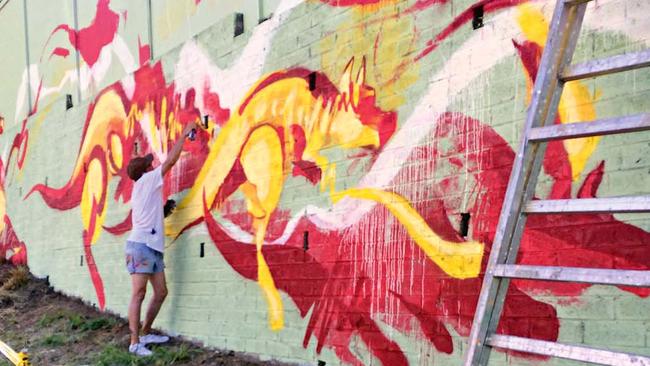
It is the ethos of an artist who grew up in a city where street art is not only discouraged but regularly buffed over. On its website, on a page titled “Controlling graffiti”, Brisbane City Council cites the “broken window” social theory, developed by American academics James Q. Wilson and George L. Kelling in 1982, which posits that a clean environment devoid of excessive litter, graffiti and smashed glass signals that an area is monitored and that criminal behaviour is not tolerated; if these factors are not addressed, criminality is supposedly encouraged.
Though the theory has been debated within the social sciences and public sphere over the past three decades, the Council uses it to justify its graffiti removal task force, arguing that it would lead to a negative impact on business operations, property values and “feeling safe in the community” if its zero-tolerance approach were not in place. “Rapid removal is the most effective way to prevent graffiti reappearing because it reduces the recognition that graffitists crave,” it says on the BCC website.
One of Lister’s many concurrent projects of the last several years is Graffiti: The Musical, a semi-autobiographical stage production that he has written, storyboarded and designed, though it has not yet been cast or performed. It tells the story of a teenage artist who discovers his talent for painting, builds his skills, gets arrested, goes to jail and emerges as a man and a better painter. It is written as a tragedy: as the musical ends, a faceless bureaucrat named The Grey Man paints over his creations, depriving both the artist and the community of the fruits of his labour. If the work cannot be seen, what was it all for?
The musical is based on Lister’s brushes with bureaucracy. After the council painted over several of his works in 2010, including a large-scale mural of a face and clawed hands commissioned by a building owner on private property in a vacant lot in Fortitude Valley – ironically, one of the offences that magistrate Barry Cosgrove dismissed from court in January – Lister began adding council workers in high-vis vests to his murals, grey paint rollers in hand, in a recursive example of art imitating life imitating art.
At Dornoch Terrace, as he paints in silence, several people walk past the canvas without comment or provocation. Pulling out two fresh cans, ball bearings bouncing furiously inside as he shakes them, he reflects: “It’s funny how much people tense up at the sound of a spray can.”
From the cartoon actions of 10-year-old Bart Simpson (whose graffiti-tagging alter ego is “El Barto”) through to British artist Banksy, the street art world’s subversive commander-in-chief, popular culture has conditioned us to associate the sound of shaking and spraying paint with furtive, illicit activities conducted under cover of darkness. To see a skilled artist working with an aerosol can in a public place in daylight is incongruous, and Lister’s 15 years of experience with this medium has conditioned him to expect negative reactions to his work, too. “That guy’s gonna call the cops,” he says, noting a white car that slows down and turns into a nearby street. It doesn’t eventuate. “This old man’s gonna have a problem, for sure,” he says later, clocking an elderly gent across the street who is slowly walking his dog with the assistance of a cane.
About two hours into the piece, as the six rosellas come to life, an electric gate opens at the driveway and a four-wheel drive begins reversing out. Seeing Lister at work, the driver stops, lowers her window, and announces, “Lovely!”
Vashti Bland hops out of the vehicle with her husband Simon, leaving the engine idling while they admire the work, take photographs and drag their son Riley away from playing Minecraft to show him the new paint job. Soon, another vehicle arrives with the Blands’ other child, a daughter who stands entranced alongside a friend, marvelling at the artist at work. “I haven’t had this much excitement since I had a baby!” says Vashti. “I’ve been dreaming about this since we built the fence in 2008!” She says she invited Lister to paint the mural “to rebel against the gentrification of our suburb”.
No money changes hands for this artwork; the painter pays for his own materials, and does not charge for the three hours he spends here. It is a gift. “I appreciate you loving it and spreading the message,” he tells the couple. “Thanks for your support. On behalf of Brisbane, I thank you.”
While the Blands and friends stand to watch him put the finishing touches to the birds and add his surname to the top corner, the old man and the dog walk by. “It’s beautiful,” he tells Lister through a thick European accent. “I think the Prime Minister should come to live here!”
Lister looks up, gobsmacked. “Thank you so much!” he says. Then, to me: “How wrong of an idea did I have about this guy? What a lovely man. You can’t judge a book by its cover.”
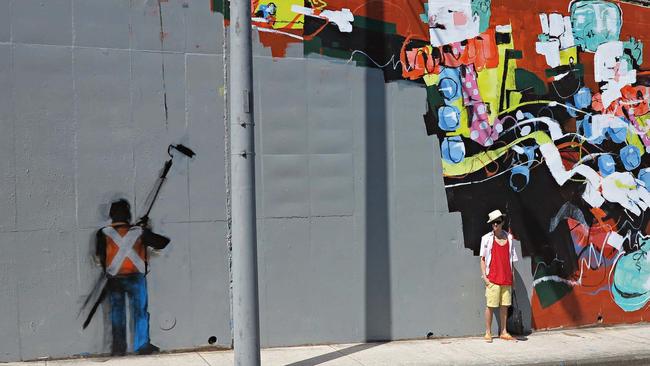
At noon the next day, Lister sits atop fresh boxes of aerosol cans in a sliver of shade beside busy Kelvin Grove Road, in Brisbane’s inner-north. It is a punishingly hot Sunday, which makes his task for the next few hours more taxing than usual: as a late addition to the Brisbane Street Art Festival, Lister has been offered a large concrete wall topped with a wooden fence, several metres high and perhaps two dozen across, on which to paint his latest work. Ahead of his arrival, the canvas has been prepared with a light green base. All that separates Lister from the roaring traffic is the footpath and a thin strip of yellow-and-black tape strung between star pickets. In the centre of the tape is a sign: “Artist working above.”
While he paints a mural that features a mob of bouncing kangaroos coloured in the distinctive indigenous shades of red, yellow and black, Meredith McMaster proudly takes photographs of her son at work. A crowd gathers in the shade across the six-lane street. This is street art as public spectacle, on a much larger scale than yesterday’s flock of rosellas painted across town. Plenty of drivers honk their horns and raise their thumbs at him, including one bloke in a high-vis jumpsuit who pilots a Queensland Rail ute. A couple of fans have brought copies of his hardcover art book Anthony Lister: Adventure Painter (Gingko Press), which he happily signs.
Every day, this work will be seen by thousands of people. “I think we might be making history today,” says Reza Afkhami, a dreadlocked interpreter who has been beaming nonstop since midday. Afkhami owns this wall and the 110-year-old house behind it, and gratefully offered it to the Brisbane Street Art Festival so that the drab concrete space might be beautified – with the city council’s permission, of course.
After adding his surname to the mural in the fading light Lister packs up his materials and drives away from the streetside canvas, soon to leave his home town once again. The Grey Man is nowhere to be seen.


